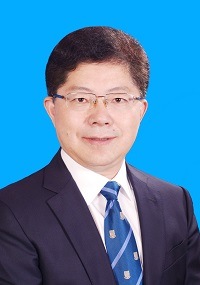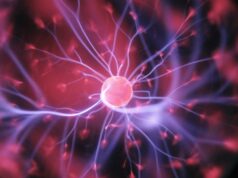
The findings of a randomised controlled trial (RCT) have indicated that accelerated intermittent theta-burst stimulation (iTBS), administered to the left dorsolateral prefrontal cortex (DLPFC), is an effective and well-tolerated therapeutic approach in patients with Alzheimer’s disease. The results of this trial are published in Brain Stimulation by Xingqi Wu, Yanghua Tian and Kai Wang (Department of Neurology, The First Affiliated Hospital of Anhui Medical University, Hefei, China), and colleagues.
“The ameliorating effects [of iTBS] were more effective and robust among patients with mild Alzheimer’s disease than those with severe Alzheimer’s disease,” Wu, Tian and Wang et al write. “In summary, our findings provide RCT evidence for the potential use of iTBS in the encoding function of associative memory and cognitive enhancement among patients with Alzheimer’s disease. Future studies should investigate the efficacy across multiple centres and characterise the neural mechanisms involved in these improvements.”
The researchers note that, based on promising results from recent studies, high-frequency repetitive transcranial magnetic stimulation (rTMS) administered to the DLPFC has the potential to ameliorate associative memory deficits in Alzheimer’s disease patients. In addition, they state that sequencing is a key factor affecting rTMS efficacy, and iTBS—a novel rTMS protocol—has improved cognitive processing more efficiently than traditional rTMS protocols in prior studies, but that there are a lack of existing RCT data in this space.
As such, they set out to investigate the efficacy of accelerated iTBS in enhancing associative memory among Alzheimer’s patients using a randomised, double-blinded, placebo-controlled, parallel trial. Between August 2018 and January 2020, a total of 60 patients were enrolled, with 47 of them ultimately completing the trial.

These patients were divided into two groups to receive either active or sham iTBS over the left DLPFC for 14 consecutive days. Therapy was performed using the Rapid transcranial magnetic stimulator (Magstim), with coil placements being guided by the participants’ anatomical image and a frameless neuro-navigation system (Brainsight, Rogue Research) in all stimulations. Outcomes were then assessed on day 15 (week two) and eight weeks after the cessation of treatment (week 10).
The researchers detail that associative memory was the only a-priori primary outcome of the study, and was estimated using a face-cued word association test at baseline and repeated at the end of treatment. Secondary outcomes included changes in clinical symptoms and multi-domain cognition tests at weeks two and 10, while adverse events including painful scalp sensations, twitching of the eyelid, tinnitus, epilepsy, and epileptic seizures, were recorded throughout the study by self-report.
Regarding the study’s results, they state that the active group displayed greater associative memory improvements compared with the sham group. Specifically, they report a marked improvement in associative memory scores in the active group on day 15 (1.56 to 2.54; 72.83% normalised change) that was not observed in the sham group (1.39 to 1.20; -10.46% normalised change). Similar findings were observed at the eight-week follow-up between the active (1.56 to 2.28; 47.24% normalised change) and sham (1.39 to 1.17; -4.99% normalised change) groups.
Furthermore, higher mini-mental state examination (MMSE) scores at baseline were associated with greater associative memory improvements at weeks two and 10. For the independent iTBS group, this correlation predicted improvements in associative memory (p<0.001) and identified treatment responders with 92% accuracy. Responses to most of the neuropsychological tests conducted in the study were markedly improved in the active group too, the researchers add. In particular, the Montreal Cognitive Assessment (MoCA) and MMSE scores in the active group increased by 2.8 and 2.3 points, respectively, at week two, while there was no significant change in the sham group.

Eight participants reported adverse events, with five patients reporting painful scalp sensations—three in the active group and two in the sham group—two patients in the active group reporting eyelid twitches, and one patient in the sham group reporting tinnitus. All these events were tolerable, the researchers add, and diminished gradually after treatment cessation. No cases of epilepsy or epileptic seizures were recorded.
The researchers conclude that, in this RCT, accelerated iTBS of the left DLPFC effectively alleviated deficits in the encoding function of associative memory—an effect that was sustained for eight weeks after treatment cessation. “In the present study, accelerated iTBS of the DLPFC demonstrated an effective and well-tolerated complementary treatment for patients with Alzheimer’s disease, especially for individuals with relatively high MMSE scores,” Wu, Tian and Wang et al add.










